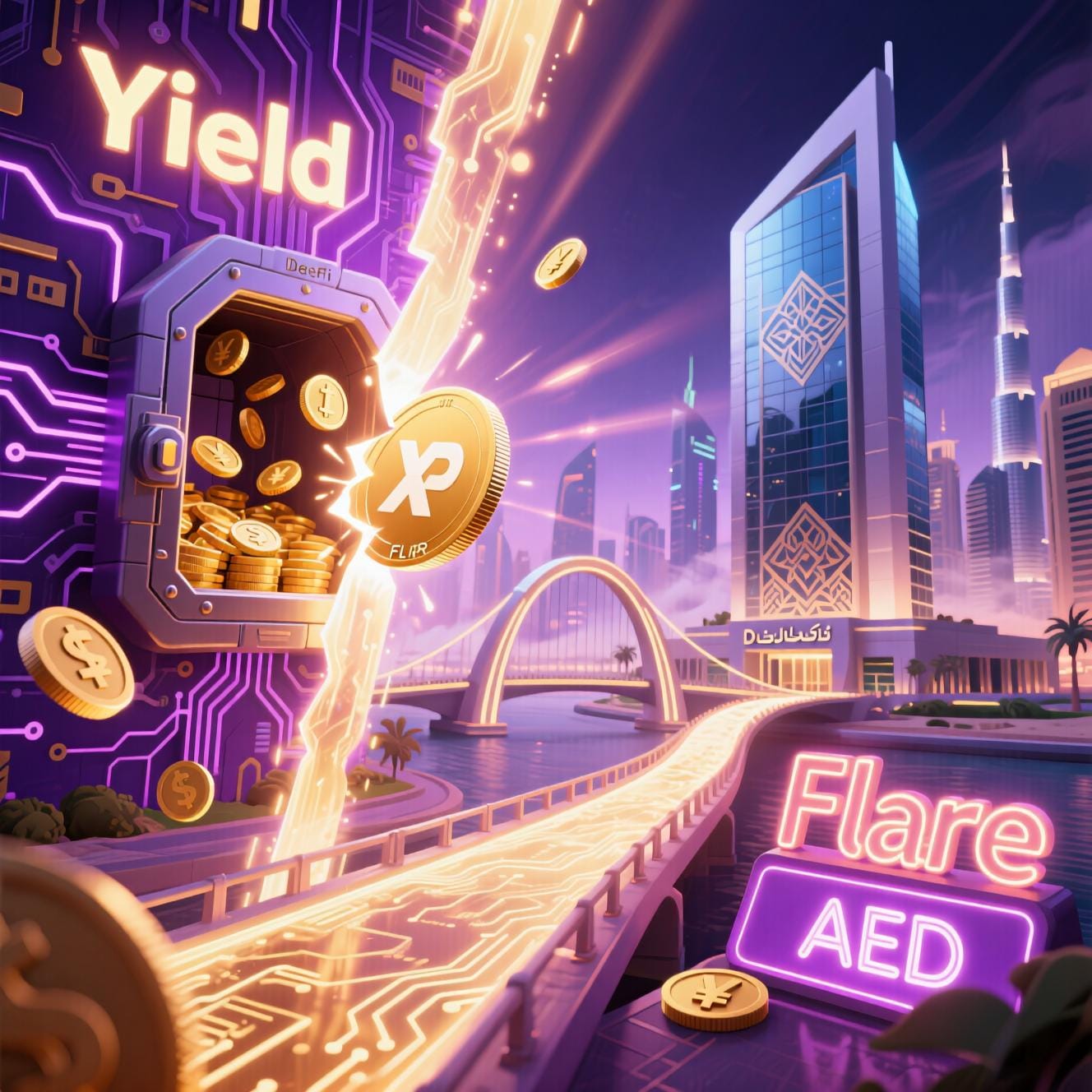Crypto.com Launches XRP Yield via Flare – A New Era of Passive Income Begins
Crypto.com now lets users earn yield on XRP through Flare Network—unlocking DeFi for the first time. Paired with Dubai’s new crypto payment system, XRP is becoming a cornerstone of regulated, income-generating blockchain infrastructure.

XRP Takes a Quantum Leap: From Payments to Passive Income
XRP is no longer just a fast, low-cost settlement token. Thanks to a groundbreaking integration with Flare Network and support from Crypto.com, it has officially entered the DeFi economy—and for the first time, holders can earn yield directly on their XRP.
In a move that reshapes the token’s utility, Crypto.com has rolled out a new feature allowing users to restake XRP via Flare, generating passive income while retaining exposure to the underlying asset. This isn’t just a niche upgrade—it’s a fundamental expansion of XRP’s economic model.
And it’s happening at the same time Dubai has made XRP a regulated asset for government payments, cementing its role in real-world, institutionally backed digital finance.
Flare Integration: Bringing Smart Contracts to XRP
At the heart of this transformation is Flare Network, a decentralized blockchain designed to extend smart contract functionality to non-EVM assets like XRP.
By bridging XRP to an Ethereum Virtual Machine (EVM)-compatible environment, Flare unlocks a world of possibilities:
- Yield generation through staking and liquidity provision
- Access to DeFi dApps (lending, borrowing, swaps)
- Cross-chain interoperability with Ethereum, Polygon, and others
Previously, XRP’s design prioritized speed and scalability for payments—but lacked native smart contract capabilities. Now, thanks to Flare, XRP can participate in DeFi without changing its core blockchain.
Crypto.com’s integration removes the technical barrier, allowing millions of users to access these features with a single click—no bridging, no wallets, no complex steps.
Restaking for Yield: A Game-Changer for Holders
The key innovation? XRP restaking.
Through Flare’s State Connector technology, XRP locked on Crypto.com can be used to secure the Flare network and other decentralized protocols, enabling users to:
- Earn staking rewards in FLR (Flare’s native token)
- Participate in liquidity pools
- Generate passive income without selling or moving XRP
This transforms XRP from a static store of value into an active income-generating asset—a shift that could dramatically increase long-term demand.
Analysts note that this model mirrors Ethereum’s post-merge evolution, where staking became a primary driver of holder retention.
Now, XRP holders can enjoy dual benefits: price appreciation and yield—without sacrificing security or decentralization.
Dubai’s Stamp of Approval: XRP as a Regulated Government Asset
While DeFi expands XRP’s utility, Dubai is legitimizing it at the highest level.
At the Dubai FinTech Summit, authorities confirmed a new partnership with Crypto.com enabling residents to pay for government services using cryptocurrency—with XRP as the first approved digital asset.
Here’s how it works:
- Users pay in XRP via supported wallets
- The amount is instantly converted to AED (Emirati dirhams)
- The transaction complies with local financial regulations
This initiative supports Dubai’s Cashless Strategy 2026, which aims for 90% of transactions to be digital. By choosing XRP, the city signals confidence in its speed, scalability, and regulatory clarity.
Ripple’s existing license from the Dubai Financial Services Authority (DFSA) further strengthens trust, positioning XRP as a preferred asset for trade, remittances, and public-sector innovation.
The Bigger Picture: XRP’s Dual Evolution
XRP is undergoing a dual transformation:
- Technologically – via Flare, it’s entering DeFi and smart contract ecosystems
- Regulatorily – via Dubai, it’s becoming a government-recognized payment rail
This combination is rare in crypto. Most tokens are either:
- Technically advanced but unregulated (e.g., many altcoins)
- Regulated but limited in utility (e.g., some CBDCs)
XRP is now both compliant and composable—a powerful foundation for institutional adoption.
Why This Matters for the Future
The implications are far-reaching:
- More exchanges may follow Crypto.com’s lead, offering XRP yield
- Institutional investors gain a regulated, income-generating digital asset
- Developers can build dApps on Flare that leverage XRP’s global payment network
- Governments may adopt similar models, using crypto for tax, fees, and services
With DeFi access and government validation, XRP is no longer just a “meme vs. utility” debate. It’s becoming a hybrid infrastructure layer—bridging traditional finance and decentralized innovation.





